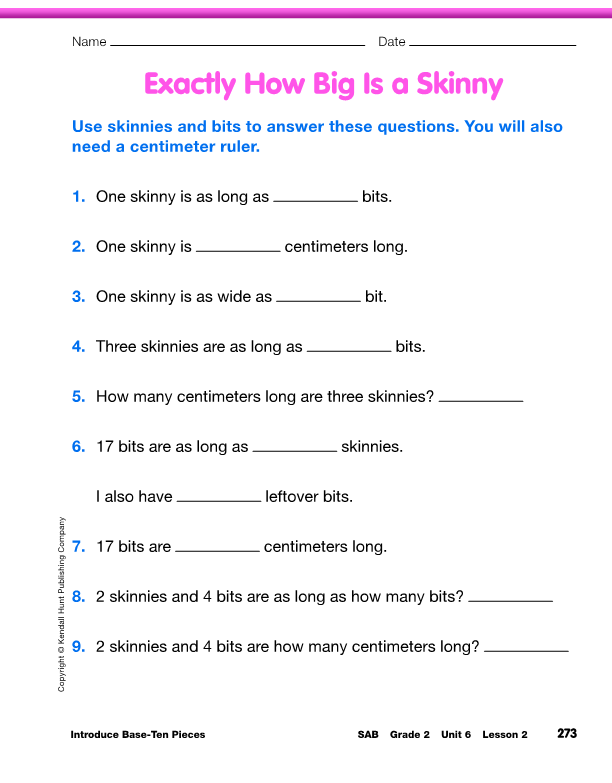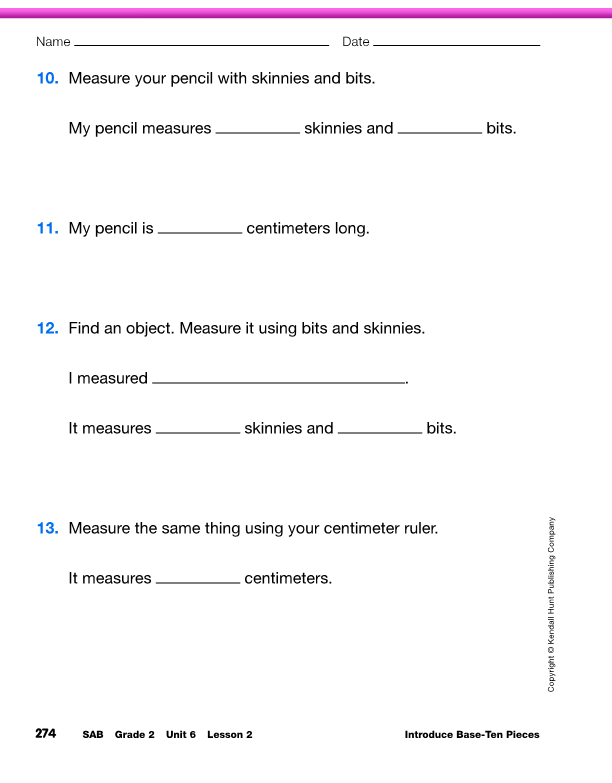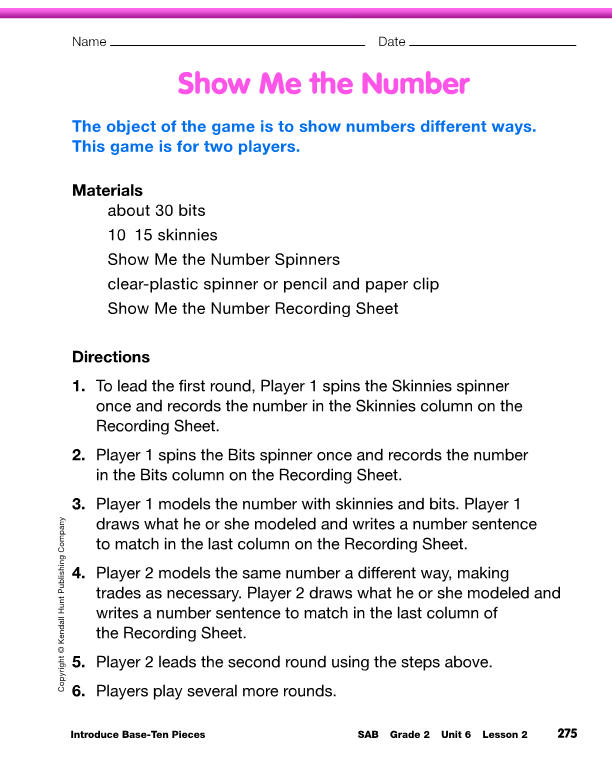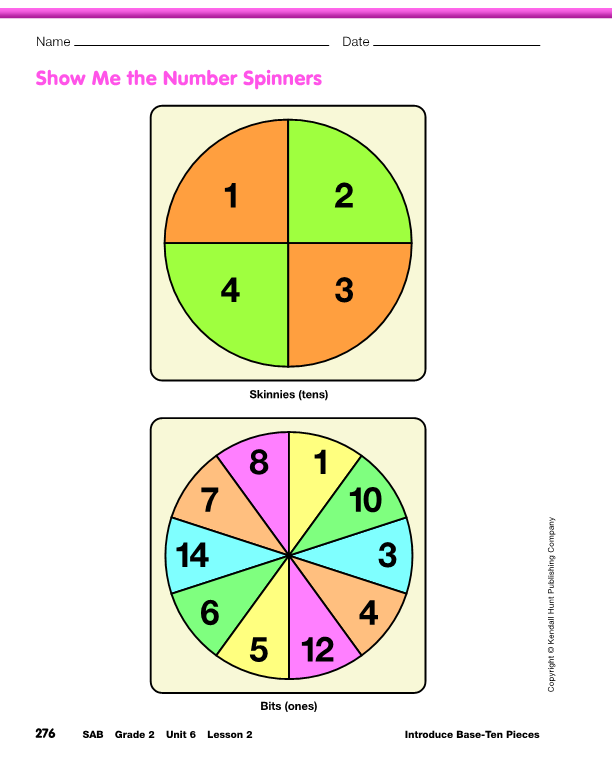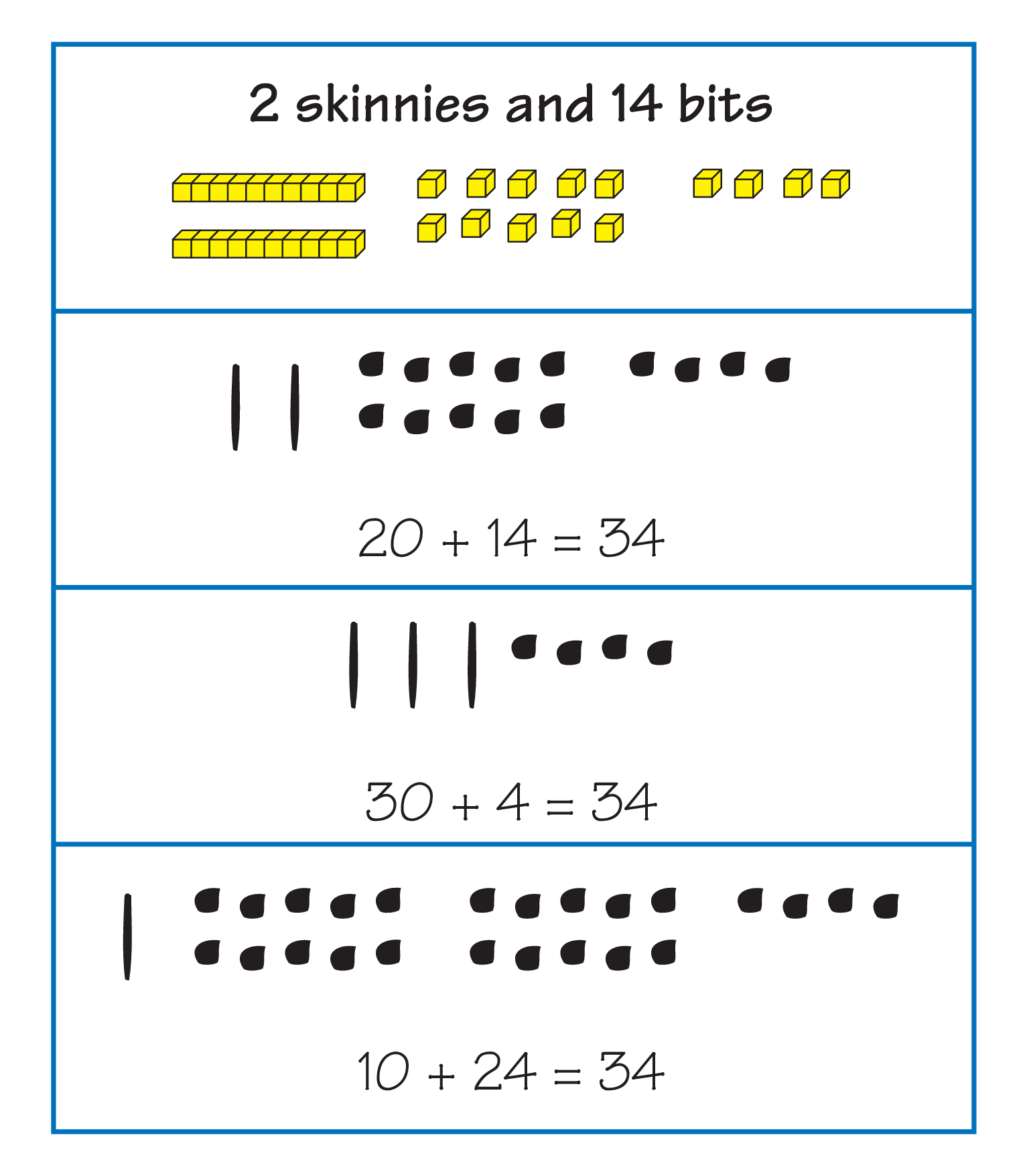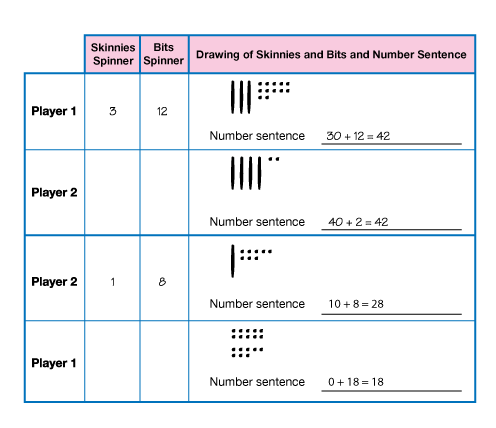Introduce Base-Ten Pieces
Est. Class Sessions: 3–4Developing the Lesson
Part 2: Group Bits with Skinnies
Measure a Skinny. Distribute the sets of base-ten pieces (30–40 bits and 10–15 skinnies) you prepared to each pair of students and provide each student with a centimeter ruler. Tell them they are going to find out exactly how big a skinny is.
Ask:
Guide students to the idea of measuring a skinny by lining up bits next to it. You may want to have a student demonstrate lining up ten bits alongside a skinny.
Ask students to review the rules to follow when measuring:
Have students work in pairs to complete the Exactly How Big Is a Skinny pages in the Student Activity Book.
Prepare to Play Show Me the Number. Write a number of skinnies and bits on a display. For example, write 2 skinnies and 14 bits. Ask students to use their base-ten pieces to show skinnies and bits and to determine the number of bits shown. After students have modeled the number with the base-ten pieces, use base-ten shorthand to record the model. Use a simple vertical line ( | ) to indicate a skinny and a dot ( • ) to indicate a bit. See Figure 6.
Ask:
Record the different representations and the corresponding number sentences on the board.
Ask:
Repeat this discussion for a few more examples (e.g., 4 skinnies and 8 bits or 1 skinny and 12 bits). These examples will help prepare students to play the game Show Me the Number in the Student Activity Book.
Demonstrate the game by displaying the Show Me the Number Spinners in the Student Activity Book. After spinning each spinner once, ask students to gather the appropriate number of skinnies and bits from their collection. Display the Show Me the Number Recording Sheet from the Student Activity Book.
Record the number of skinnies and bits from the spinner by Player 1 and ask:
Ask the student volunteer to draw a picture of the base-ten pieces and to write a corresponding number sentence. See Figure 8.
Ask a different student volunteer to group the bits a different way. They should draw a picture of the base-ten pieces using the shorthand and a number sentence in the Player 2 row. See Figure 8.
Note that it is possible to spin more than nine on the Bits spinner. The spinning student has the option of modeling the number as shown on the spinners or making a trade before modeling the number. For example, if the Skinnies spinner shows a 2 and the Bits spinner shows a 14, the player can choose to model the number with 2 skinnies and 14 bits (20 + 14) or choose to trade 10 bits for another skinny and model the number with 3 skinnies and 4 bits (30 + 4). Whatever representation the first player chooses, the second player has to model the number in a different way and write a different number sentence.
Play Show Me the Number. Organize pairs to play Show Me the Number. Each student pair can use the spinner and recording sheet from one student's Student Activity Book. If there is time to play more than four rounds, their partner's recording sheet can be used to play four more rounds.
As students are playing the game, circulate and note their abilities to make necessary trades in order to model a number in different ways. Ask questions to probe whether they understand that different representations are the same number. Push them to consider whether one representation is easier to read or to work with than another.
After they have played a few rounds, have the class discuss the relative merits of one representation over another.
Ask questions similar to the following:















